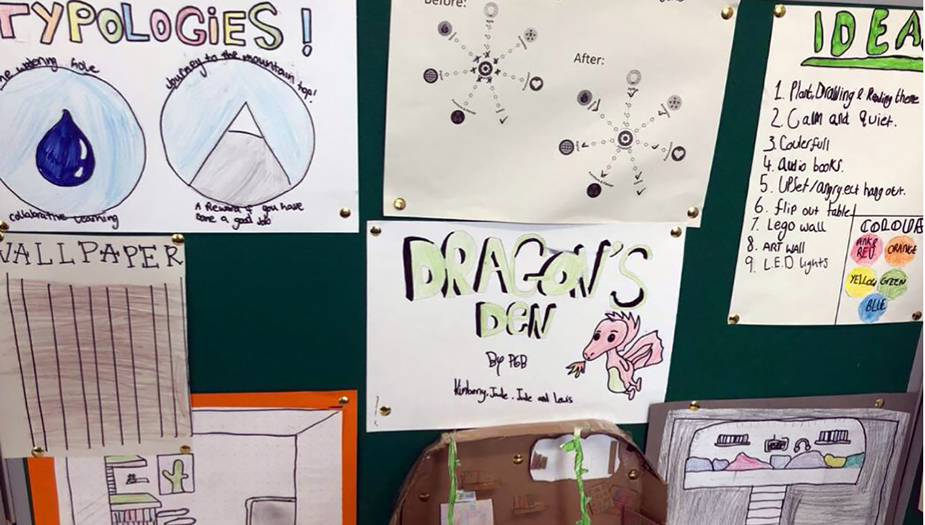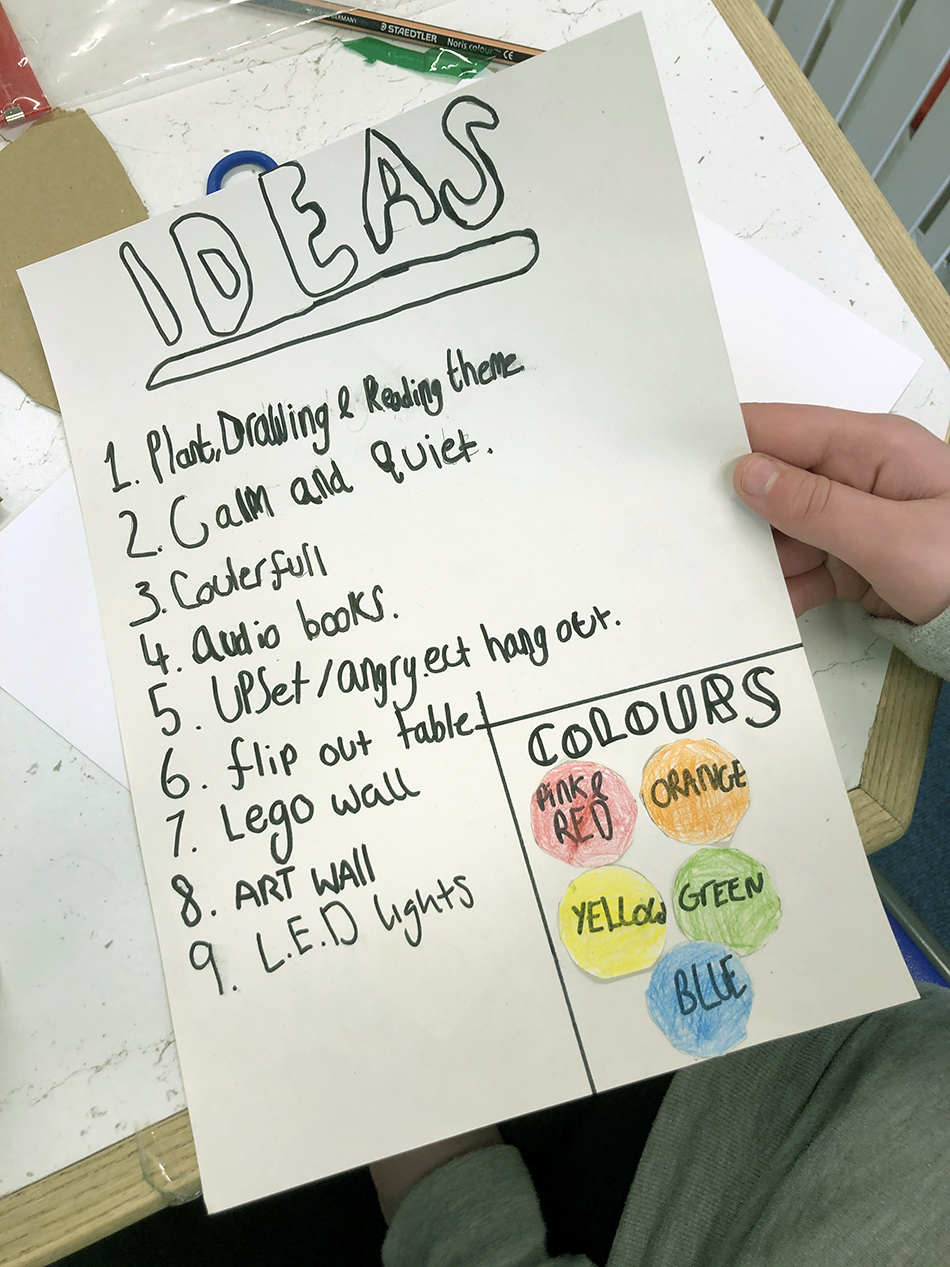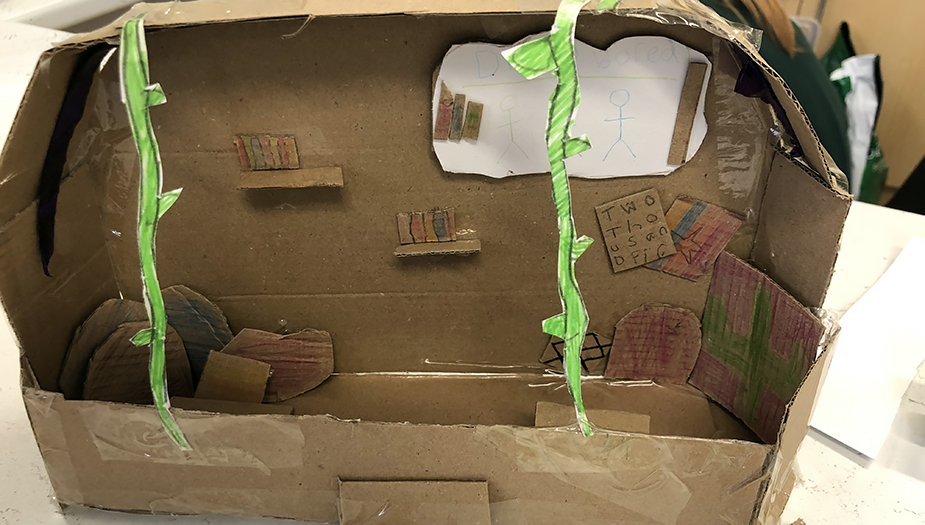Murrayburn Primary School
Using a Shared Symbolic Language for discussing and designing learning.

Tests of Change
The following case study uses the Plan-Do-Study-Act approach from the Test of Change projects.
Tests of Change (ToC) is based on an action enquiry cycle – Plan, Do, Study, Act (PDSA). This 4-step process encourages learners and educators to be at the forefront of problem-solving and decision-making to drive change in their own learning environments.
Teachers and pupils work together to explore how transforming learning as identified through ToC goals and using design-principles tools can lead to enhancing the quality of learning in our schools.
Plan
Murrayburn’s teachers were keen to explore the learning outcomes of studying spatial design. They wanted to see how they could enhance and enrich learning to develop important skills for the future.
They began by discussing with learners their views on learning spaces in the school using an assessment wheel.
Learners engaged with symbolic tools and used them to identify an area of a space they wanted to re-design: the classroom wall.
The symbolic tools were integrated into everyday classroom activities through lesson plans. This developed a common language for the learners to discuss learning.
Do
Teachers and learners explored how the symbolic tools could be used to help drive conversations about the learning that takes place in different spaces.
Teachers identified how the symbols could be linked to life skills and employability. They also identified how external experts – interior designers from the local authority – could help with the design process.
A Dragons’ Den-style event was set up, with learners pitching their design ideas for the classroom wall to an interior design expert from the local authority.
The design process included learners working in groups, sketching out ideas and creating 3D models for discussion with the whole class. They then prepared to present their designs.

Study
During the COVID-19 lockdown, the symbolic tools’ learning typologies were used to continue discussions around learning, especially home learning environments.
The learning typologies refer to different ‘types’ of learning fundamental to schooling. They provide symbols that signify different kinds of spaces like creativity, collaborative, and celebratory.
The process helped develop leadership and presentation skills and gave insight into different jobs and employment. These were all mapped against experiences and outcomes.
The school also carried out an end-of-term survey. Many learners mentioned the ‘cave activity,’ where they worked on creative tasks independently, was their favourite

Act
Learners valued having their own language for different types of learning (for example, ‘collaborative’ and ‘experiential’).
They also valued the opportunities their own language provided for independent learning and their own ‘safe space.’
Teachers valued the ‘common language’ the symbols provided, as it facilitated links across different types of spaces in the school and different types of learning.
The Dragons’ Den had a very positive impact, with the learners seeing their designs come to life and experiencing how they were listened to. Learner voice counts.
The success of the toolkit and learning space design convinced the school to expand the project across its mainstream classes. It also persuaded it to investigate how it could be used in specialist learning environments.
Experiences and Outcomes achieved through the Tests of Change process

Resilience
HWB 0-07a / HWB 1-07a / HWB 2-07a / HWB 3-07a / HWB 4-07a

I am learning skills and strategies which will support me in challenging times, particularly in relation to change and loss.

Contribution
HWB 0-13a / HWB 1-13a / HWB 2-13a / HWB 3-13a / HWB 4-13a

Through contributing my views, time and talents, I play a part in bringing about positive change in my school and wider community.
“The cave reminds me of the need for safe spaces in the classroom, but also outwith the classroom for pupils to have time on their own and to be able to reset and reregulate their emotional sense.”
How can the room we work in make a lesson better or more inspiring?
The spaces we work and learn in play a huge part in shaping our mental health, happiness, and ability to learn. Our Shared Learning toolkit will help guide you and your pupils step-by-step on a collaborative mission to find the answers.
